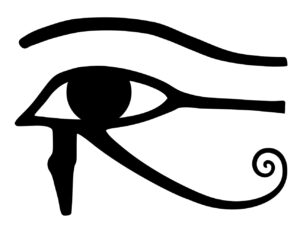 Fact or Fiction: Joseph’s wife Asenath was held captive in a tower before she married Joseph? Well, I counted it as sort of both. An ancient Jewish novel, written sometime between 200 B.C. and 200 A.D., tells the story of Joseph and Asenath. It was reworked a few centuries later as ancient Christian fiction!
Fact or Fiction: Joseph’s wife Asenath was held captive in a tower before she married Joseph? Well, I counted it as sort of both. An ancient Jewish novel, written sometime between 200 B.C. and 200 A.D., tells the story of Joseph and Asenath. It was reworked a few centuries later as ancient Christian fiction!
Fascinating, huh, to think that “biblical fiction” began so long ago?
Though in the ancient fiction Joseph didn’t save Asenath because of her long hair dangling from a tower window–as happened in Grimm’s Fairytale, Rapunzel, or in Disney’s Tangled–the ancient romance describes how our Hebrew hero does indeed rescue his fair Egyptian maiden from a tower where she’s been held captive for years by her wicked father.
What Did Asenath’s World Look Like?
CLICK HERE if you’d like to read the full ancient story of Joseph and Asenath: The Confession and Prayer of Asenath, Daughter of Pentephres the Priest. In this translation of the original documents, we find fascinating descriptions of Asenath’s appearance, her rooms in the tower, and interesting additions made by the early Catholic Church.
As I understand it, the purpose for both the Jewish novel and the early Church’s adaptation was a mythical rendering of God’s power to proselytize. (Christians today call it Evangelism.) Only after studying the roots of this ancient novel did I truly understand Asenath’s HUGE role in Scripture.
Asenath was the first Gentile grafted into Abraham’s Covenant Promise!
Tamar came soon after when she both outsmarted Judah (her father-in-law) and exposed his sin (Genesis 38), which reshaped his heart into a royal vessel God could use to raise up kings from which His Only Son would be born (Revelation 5:5).
Sorry, No Long Golden Hair
 Most wealthy Egyptian women or priestesses during Asenath’s time period would have shaved their heads (or cut it very short) and worn elaborate wigs. Remember the lovely woman on my cover of, The Pharaoh’s Daughter?
Most wealthy Egyptian women or priestesses during Asenath’s time period would have shaved their heads (or cut it very short) and worn elaborate wigs. Remember the lovely woman on my cover of, The Pharaoh’s Daughter?
However, I went a different way with Asenath. In Feast or Famine presents its heroine as special in many ways–one of which is her natural hair that must be combed, braided, and maintained by the two young women who have grown up with her in the tower.
But why did everyone else wear wigs? One word.
Bugs.
Yep. Egyptians were a very clean people. They often shaved their whole bodies, leaving no hair anywhere (and that’s all I have to say about that). 😳
They fought lice, dung beetles (and other beetle varieties), dust, extreme heat, and many other unpleasantries. But Egyptians were also incredibly resourceful! Refusing to be held captive by their native land, they used beauty products as weapons.
The Eyes Have It

Jeff Dahl – Own work; https://creativecommons.org/licenses/by-sa/4.0/legalcode
In Asenath’s story, as in all three previous novels set in Egypt, most Egyptian characters wear cosmetics–specifically kohl around their eyes. Kohl is a black powder, produced by grinding a grayish/black mineral, applied with a small, wooden applicator with a wedged tip. Women wore it as women wear eyeliner or mascara today to keep dust and bugs from invading their eyes.
Men often drew the Eye of Horus around their left eyes to symbolize a mythical battle between two brother gods, Seth and Horus. The story morphed through the ages, but essentially Seth tore out one or both of Horus’s eye(s), and either the god, Thoth, or the mother goddess, Hathor, restored it. The Eye of Horus often symbolizes restoration, healing, and/or redemption.
Thankful I’m Not An Ancient Egyptian
As Thanksgiving approaches this year, I can think of many reasons to be grateful–not being held captive in a tower was never really on my list until I researched Asenath’s story. 😉
However, learning all I have about Ancient Egypt, let me give you a quick list of a few obvious reasons we can perhaps ALL be happy to live in the 21st century:
- No carmine beetles in my lipstick. Though I may not know what most of the ingredients are on my lipstick box, I’m relatively sure none of them are crushed red bugs.
- No daily head shaving or battles with lice and dust that require hours of personal hygiene.
- Speaking of personal hygiene…two final words on the thankful list: indoor plumbing. ‘Nuf said.
Joseph A Captive Too
Wrapping up today’s thoughts on what holds us captive, you probably realize that In Feast or Famine begins when Joseph is a captive but is freed from his unjust imprisonment by our faithful God who gave him the interpretation of Pharaoh’s nightmares:
“Then Pharaoh said to Joseph, ‘Since God has made all this known to you, there is no one so discerning and wise as you. You shall be in charge of my palace, and all my people are to submit to your orders. Only with respect to the throne will I be greater than you.'” Genesis 41:39–40
Did you notice that Pharaoh was also a captive–held in a different kind of bondage? The young pharaoh had been terrified by his nightmares, especially when even his learned magicians couldn’t decipher them (Gen. 41:8, 15-16).
Different Kinds of Captivity
Enter Joseph, a Hebrew prisoner, who not only explained the dreams but also laid out a workable plan to save the whole ancient world from seven years of the Nile’s over abundance followed by seven years of devastating famine (Gen. 41:25-36).
Fear isn’t the only thing that can hold us captive. Do any of these common “Jailers” try to arrest your growing faith?
- Too much month and too little money? (Commonly called scarcity or poverty)
- Spending too much or over-charging on credit cards? (Commonly called materialism or shopaholism)
- Caring too much about what others think? (Commonly called people-pleasing or approval-seeking)
- The compulsion to get things “just right?” (Commonly called perfectionism or OCD)
- Any habit that keeps you from fulfilling God’s best plan for you? (Basically called sin)
You and I will likely never be held captive in a tower or be rescued by a handsome Hebrew. However, the same God who interpreted Pharaoh’s dreams hears our prayers and can save us from bondage.
“Live as people who are free, not using your freedom as a cover-up for evil, but living as servants of God.” 1 Peter 2:16 (ESV)
Today’s Question:
- Is there a circumstance, emotion, habit, or sin that holds you captive?
- What is one step you can take this week toward freedom? How can you repeat those positive steps in the future?




Comments 8
thank you for sharing that story i had not heard it before god bless and have a happy and blessed Thanksgiving
Author
Thanks, James! Glad you enjoyed the post, and you have a wonderful T-giving as well. 😊
That is sooo cool! As a lover of history and fiction, this post was particularly exciting. Thanks for sharing. Can’t wait to read the book.
Author
I felt the same way when I found that ancient fiction, Brenda! Soooooo fun! Glad you enjoyed it. 😘
Mesu, you always have such interesting stories. But don’t be so sure about you lipstick. 😉
https://www.treehugger.com/what-is-carmine-and-why-is-starbucks-taking-it-out-of-its-products-4868638
Author
Oh no!! I was so blissfully ignorant! I feel a launch publicity article coming on. LOL! 😂
Thank you so much for your ever insightful eblasts. I always learn something new from you as you make me hunger for more research into these biblical stories to see them as people with back stories, living life, complex in character, with conflicts and resolutions, and not just names in the Bible.
Author
Hey, precious friend!
I was just thinking of you today! I even went on DTB website to check on the ministry and see your face again. Prayed for y’all and what the Lord is doing through you. We have some dear friends in Israel who just got their tour guide licenses. They now host groups in their home who come to share Jesus with their Jewish neighbors (have been doing this ministry for nearly 20 years) and can now offer those groups guided tours in conjunction with the ministry aspect as well. If you ever need VERY knowledgeable and ministry-minded guides for any of your trips, please let me know, and I’ll give you their contact info. 🥰